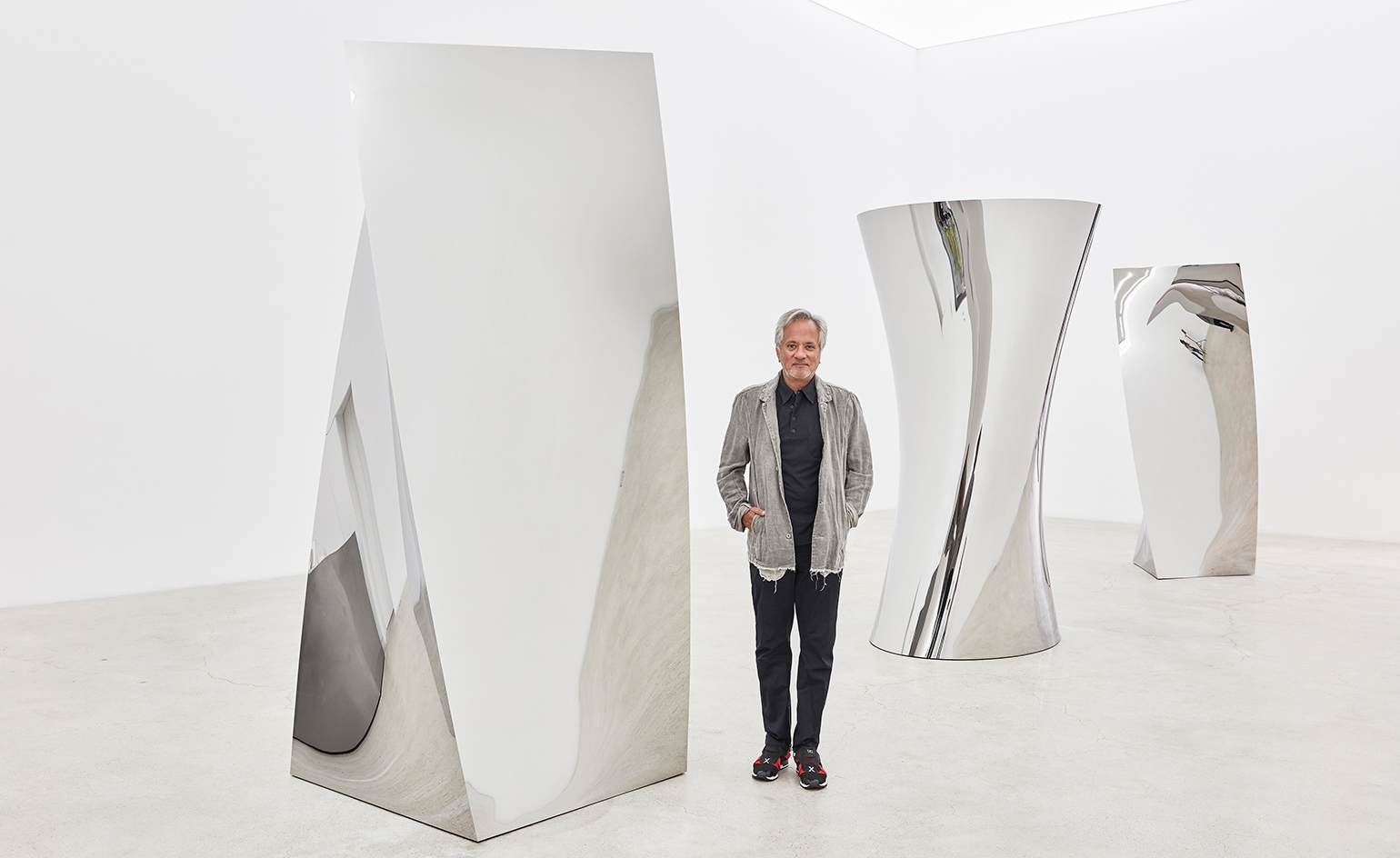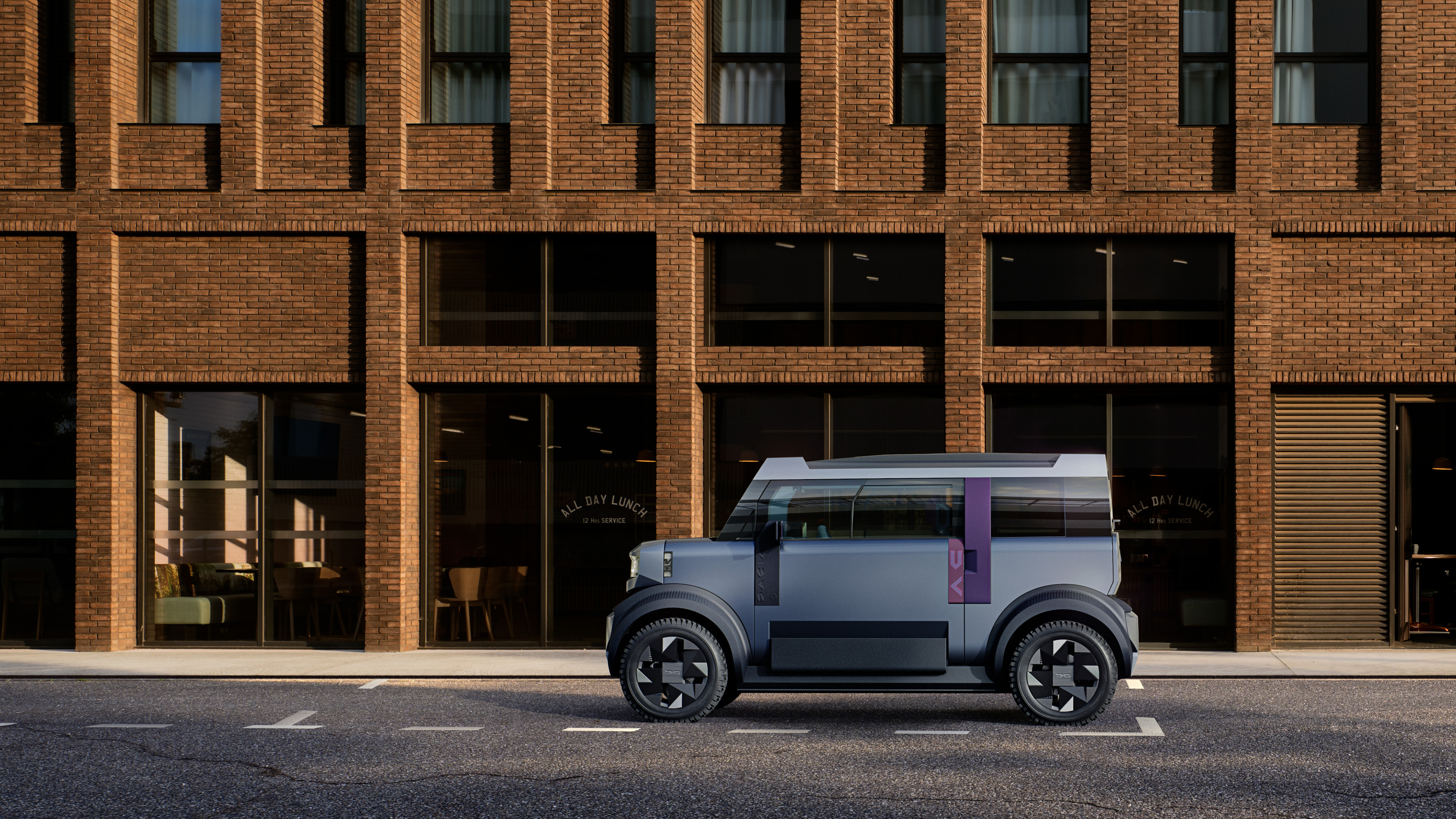Anish Kapoor reflects on Korea’s maturing art identity, as Kukje Gallery leads the charge

Anish Kapoor isn’t South Korean, but his latest group of convex-mirrored 'non-object' towers now on view at Seoul’s Kukje Gallery may reflect more than selfie opportunities. 'This whole context of what’s going on in Korea is quite interesting,' says the British sculptor, who protests 'artists are not pop stars' although he is rather well-revered throughout Korea – even if he has yet to reach the heights of TOP or G-Dragon.
Kukje – which translates as 'international' – is a three-winged gallery campus of architecture ingenuity, public sculpture gardens and a restaurant that ultimately unfurls as South Korea's main hub for the homegrown and global art scene. Kapoor has been showing with the gallery for 'a good many years' and, thanks to them, landed a solo retrospective at the technology-driven Leeum Samsung Museum of Art a few years ago.
But for his latest show, 'Gathering Clouds' – on view in Kukje Gallery's K1 and K3 buildings until the end of October – it opened in time for the art world’s descent onto Korea for the Gwangju, Seoul Mediacity and Busan biennales.'Gallery shows for artists like me are very particular. I have different bodies of work,' explains Kapoor, who additionally showed his trademarked Vantablack voids. 'The great thing about gallery shows, as opposed to institutions, is they there are places where one can try out a body of work.'

Installation view of ’Gathering Clouds’ at Kukje Gallery.
What sticks here is media art, which explains why so much of South Korea’s contemporary art scene skews towards the genre. Samsung, Hyundai and LG have prompted the 'Korean Miracle' economic boom, where the peninsular nation now touts the 11th largest global economy, particularly thanks to the areas of technology – a significant achievement considering Korea only became an independent state in 1948. Culturally, that date is the marker for the creation of modern South Korea, and thus the young country's art history is still a largely unwritten tale.
'Korean art history is Nam June Paik, then there is nothing,' says Kukje Gallery founder and director Lee Hyun-sook of the first video artist who rocked the Western world with his use of broadcast media and recordings. Nowadays, tech giants fund contemporary art through their own museums, galleries and prizes, which eventually make their way to the National Museum of Modern and Contemporary Art (MMCA).
It's an attempt to draw interest from the Korean public. Yet, engagement with art remains murky. Luring large, local crowds to exhibitions is a challenge, as MMCA director Bartomeu Mari explains: 'Art does not belong yet to popular culture. Art can grow a lot.'
However, Kukje Gallery could well be scribing the next chapter of Korean art history, while positioning itself as an essential locale for art seekers. Located in swish Samcheong, the gallery looks outward by showing art stars of the West, including Julian Opie, Ugo Rondinone, and Jenny Holzer, and is working inward towards identifying historical art movements, starting with Dansaekhwa. Hyun-sook says the gallery 'chose Dansaekhwa because there were enough works to spread around to museums and such, but they’re not directly related. From there, there’s a slow connection [between generations of artists] and that’s what we’re trying to build.'
The names currently being collected in South Korea (and the US) include Park Seo-Bo and Ha Chong-Hyun, who both have upcomings shows in New York. Interestingly, alongside headliner Kapoor, Kukje Gallery has hung little known Dansaekhwa painter, Wook-kyung Choi, a woman who slipped through borders to attend the New York School from the early 1960s through late 1970s, flopping her brushes in big strokes à la Jackson Pollock, Willem De Kooning and Robert Motherwell.
But just as Park and Ha both told us that they reject Western narratives and see themselves as individual artists, Wook did too. It's a point which plays a bigger role in the identity of Korean fine art than has been acknowledged — or exported.

Installation view of ’Gathering Clouds’ at Kukje Gallery.

Installation view of ’Gathering Clouds’ at Kukje Gallery.
INFORMATION
'Gathering Clouds' runs until 30 October. For more information, visit the Kukje Gallery website.
ADDRESS
54 Samcheong-ro
Sogyeok-dong
Jongno-gu
Seoul
South Korea
Receive our daily digest of inspiration, escapism and design stories from around the world direct to your inbox.
Julie Baumgardner is an arts and culture writer, editor and journalist who's spent nearly 15 years covering all aspects of art, design, culture and travel. Julie's work has appeared in publications including Bloomberg, Cultured, Financial Times, New York magazine, The New York Times, Wall Street Journal, as well as Wallpaper*. She has also been interviewed for The Atlanta Journal-Constitution, Miami Herald, Observer, Vox, USA Today, as well as worked on publications with Rizzoli press and spoken at art fairs and conferences in the US, Middle East and Asia. Find her @juliewithab or juliebaumgardnerwriter.com
-
 Year in review: the shape of mobility to come in our list of the top 10 concept cars of 2025
Year in review: the shape of mobility to come in our list of the top 10 concept cars of 2025Concept cars remain hugely popular ways to stoke interest in innovation and future forms. Here are our ten best conceptual visions from 2025
-
 These Guadalajara architects mix modernism with traditional local materials and craft
These Guadalajara architects mix modernism with traditional local materials and craftGuadalajara architects Laura Barba and Luis Aurelio of Barbapiña Arquitectos design drawing on the past to imagine the future
-
 Robert Therrien's largest-ever museum show in Los Angeles is enduringly appealing
Robert Therrien's largest-ever museum show in Los Angeles is enduringly appealing'This is a Story' at The Broad unites 120 of Robert Therrien's sculptures, paintings and works on paper
-
 What to see at Frieze Seoul 2025
What to see at Frieze Seoul 2025Don't miss this mix of contemporary and established artists at Frieze Seoul, 3-6 September; here’s our guide to the fair and what's on around the city
-
 Paris Ballet etoiles Hugo Marchand and Hannah O’Neill to perform at Paradise Art Night during Frieze Seoul 2025
Paris Ballet etoiles Hugo Marchand and Hannah O’Neill to perform at Paradise Art Night during Frieze Seoul 2025A dazzling fusion of dance and contemporary culture awaits as Paris Opera Ballet étoiles join forces with Paradise Art Night during Seoul’s biggest art week.
-
 Bong on Bong: the Mickey 17 and Parasite director looks back on his career
Bong on Bong: the Mickey 17 and Parasite director looks back on his careerAs sci-fi romp Mickey 17 prepares to hit the big screen, Oscar-winning director Bong Joon Ho reflects on his career so far
-
 Photographing free time in South Korea: rare days off captured in new book
Photographing free time in South Korea: rare days off captured in new bookFree time is hard-earned in South Korea. In Seunggu Kim's new photography book 'Better Days,' he captures the beauty of the country at play
-
 ‘Humanity is always the centre of my practice': Alex Prager's new work blurs the line between reality and fiction
‘Humanity is always the centre of my practice': Alex Prager's new work blurs the line between reality and fictionAlex Prager speaks to Wallpaper* about her new body of work, 'Western Mechanics', which opened at Lehmann Maupin in Seoul
-
 An avant-garde Korean art movement resurfaces in LA
An avant-garde Korean art movement resurfaces in LALA's Hammer Museum gets its teeth into avant-garde Korean art with ‘Only the Young: Experimental Art in Korea, 1960s–1970s’
-
 Kim Whanki, ‘the father of abstraction in Korea’, is celebrated at Frieze Seoul
Kim Whanki, ‘the father of abstraction in Korea’, is celebrated at Frieze SeoulKim Whanki’s work has its moment at Frieze Seoul 2023, where it is reimagined for the digital age
-
 Frieze Seoul 2023: everything you need to know
Frieze Seoul 2023: everything you need to knowFrieze Seoul 2023 focuses on Asian galleries as it opens its doors for the second time in COEX, Gangnam